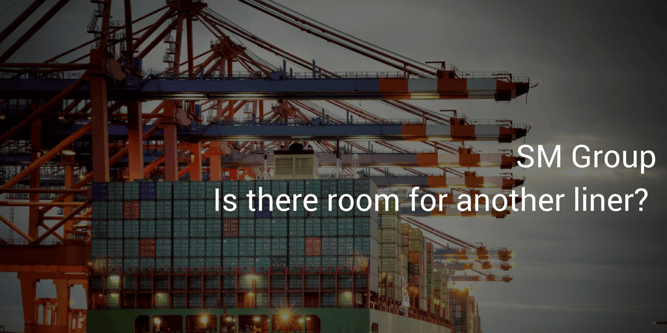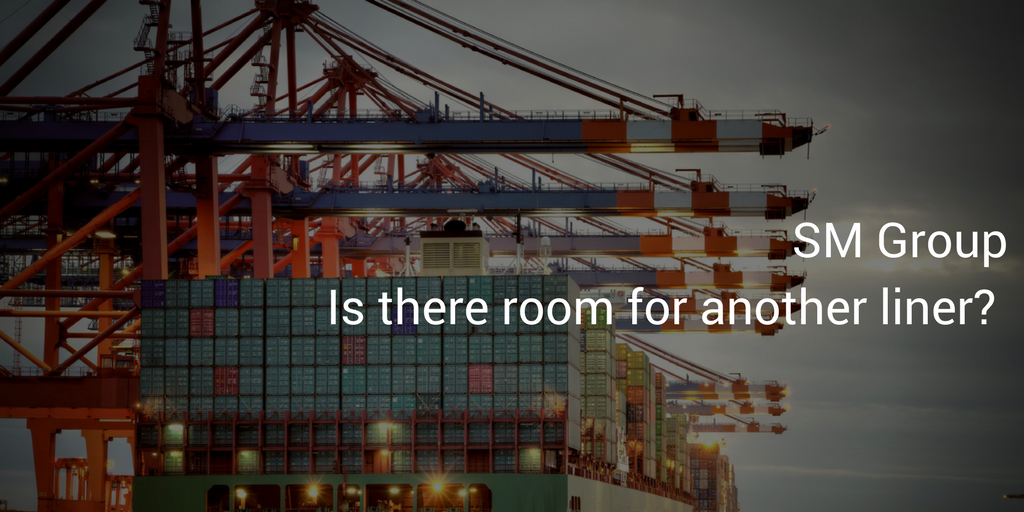
Korean conglomerate, SM Group, is aiming to be a top 20 container vessel operator by focusing on the Transpacific and intra-Asia routes. While many fear that the mighty Maersk will take over everything and claim world dominance, SM Group isn't scared easily. I admire their guts and for sure we do need more competition in the industry. I wonder if it will at all make a dent, however.
Is there room for a new entrant into the ocean freight market? Apparently SM Group believes so with its newley formed SM Line Corporation and source 21 vessels. The Korean conglomerate has acquired numerous companies including TK Chemical and Woobang in 2008 and ventured into the ocean freight market in 2013 with the acquisition of Korea Line, a dry bulk and tanker operator.
Who is SM Group?
According to Korea Times, Samra Midas Group (SM Group) began as a construction firm in 1988. Over the years, it diversified by adding shipping, chemical materials, cosmetics, and auto parts companies to its portfolio resulting in 20 subsidiaries operating under the SM Group umbrella.
The group typically purchases distressed and bankrupted companies. Earlier in 2016, it planned to acquire SPP Shipbuilding’s shipyard from its creditors but failed in its attempt.
Aiming for a Major Spot on the Transpacific Route
It may not technically be a new entrant into the ocean freight market, but the goal for SM Group seems to be to become a top 20 ocean freight player according to Alphaliner and Splash 24/7.
It’s on its way to achieving a top 20 status by acquiring Hanjin Shipping’s Asia-U.S. route. Before its fall from grace, Hanjin was a top 10 container line on this route.
While it may make sense to place this route within Korea Line’s operation, apparently, it will be kept separate by creating a new company called SM Lines.
In addition, Splash 24/7 notes SM Lines will source 21 ships consisting of some of Hanjin’s fleet, charters and purchased secondhand vessels with plans to launch the line as early as April.
If this does in fact occur, SM Lines will have a fleet of about 110,000 slots and would replace Iran’s IRISL as the world’s 20th largest container carrier, according to the latest statistics from Alphaliner.
Intra-Asia Routes Are Also an Option
Not only will SM Line be focused on the transpacific lane, it is also interested in the intra-Asia routes.
It is in discussion to join the newly minted HMM+K2, consisting of Hyundai Merchant Marine (HMM), Heung-A Shipping and Sinokor Merchant Marine, scheduled to begin joint operations in March.
Discussions could be a bit contentious as Korea Line and HMM each made bids for Hanjin assets with Korea Line winning out.
In addition, Korea Line refused to throw a life line to HMM and as a result, HMM is now under Korea Development Bank.
But, putting that aside, a senior researcher at the Korea Maritime Institute noted that HMM still faces tough competition from Maersk and MSC in the Pacific routes as the only South Korean player. "It won't be easy for Hyundai to beat them in the long-haul services," he said. Perhaps with the addition of SM Lines to the alliance it will prove beneficial if an agreement can be made.
Stay Ahead of the Ocean Freight Market
The ocean freight market remains tough for all players involved. Will a new entrant be impactful particularly with the big 3 alliances coming into play in April? We shall see.
In the meantime, rates will certainly remain active leading up to April and probably beyond. Join us for our regular webinars where we address the issues affecting your business and analyze container shipping prices for the main global routes.
%201.png)


-1.jpg)

.png?width=387&name=image%20(45).png)

